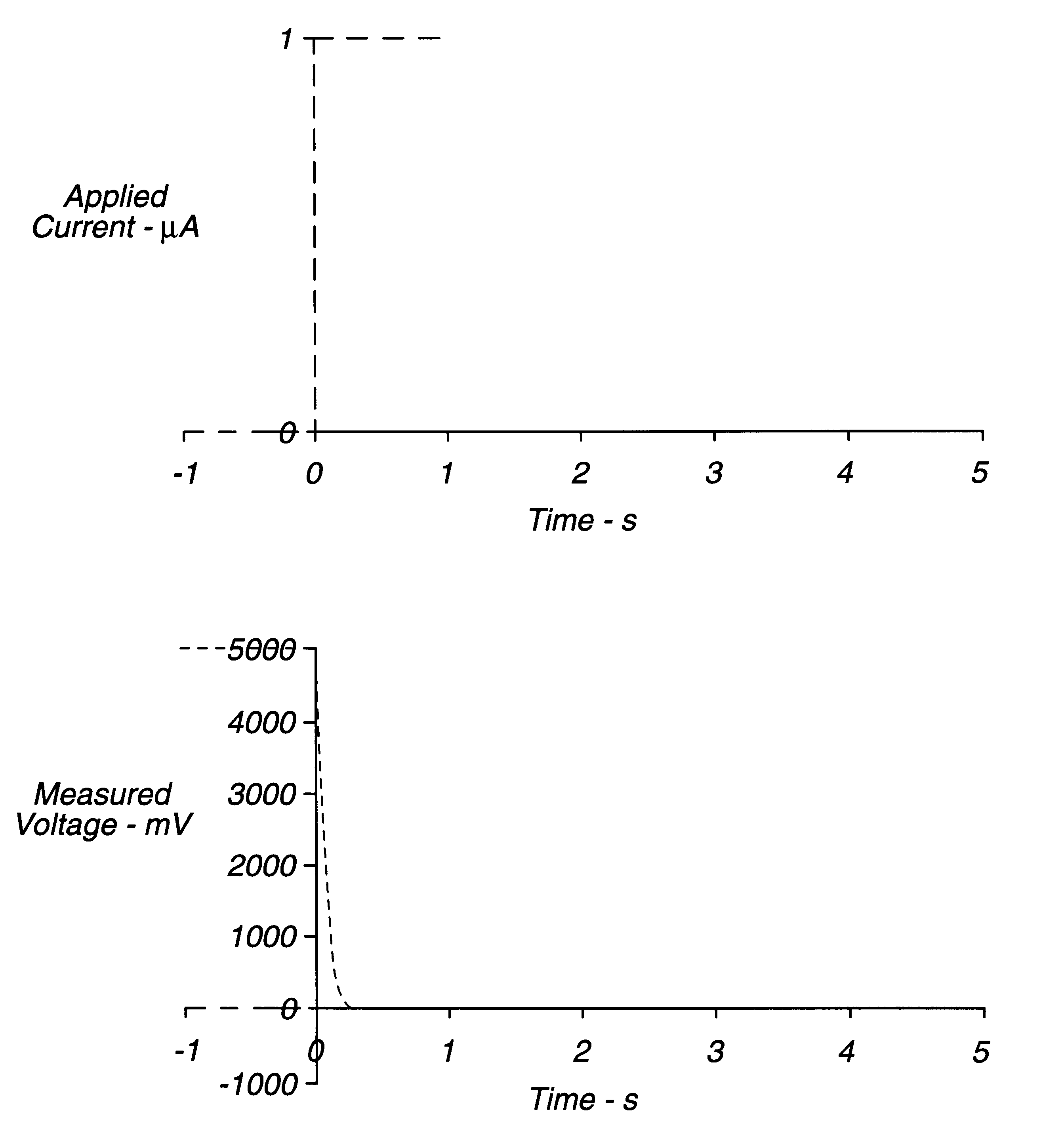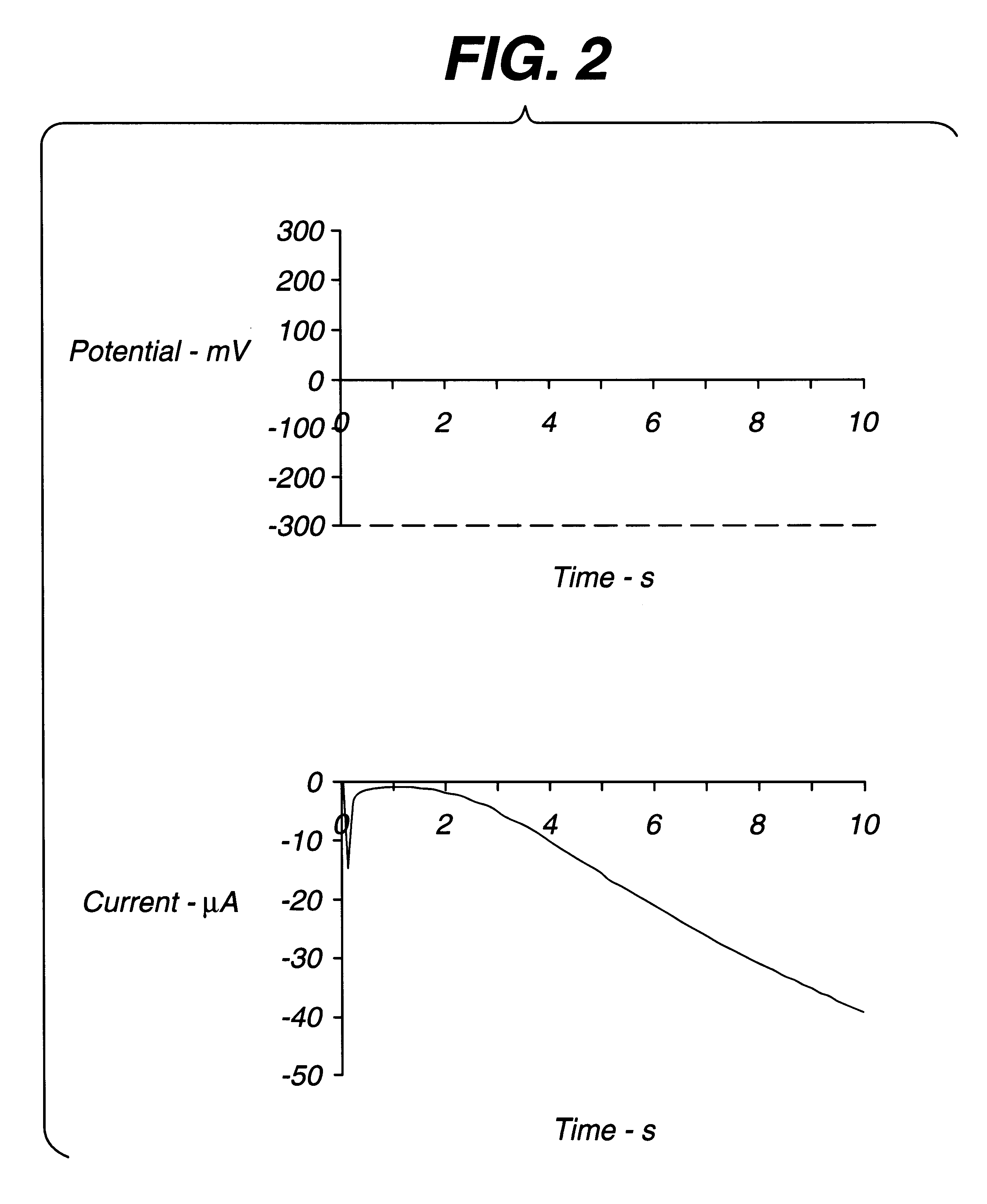Sample detection to initiate timing of an electrochemical assay
a technology of electrochemical assay and sample detection, which is applied in the direction of liquid/fluent solid measurement, biomass after-treatment, enzymology, etc., can solve the problems of affecting the timing of the electrochemical assay, affecting the detection accuracy of samples, etc., and the initial current generally decreases with the decrease of the analyte concentration
- Summary
- Abstract
- Description
- Claims
- Application Information
AI Technical Summary
Benefits of technology
Problems solved by technology
Method used
Image
Examples
Embodiment Construction
The circuit of FIG. 6 was established, with strip S being a thin layer electrochemical glucose strip of the type shown in FIG. 5, having Pd and Au electrodes. The Pd electrode was coated with a layer of buffer, glucose dehydrogenase (PQQ), and ferricyanide. A constant, small (.about.1 .mu.A) non-perturbing current was applied between the working electrode and counter / reference electrode of the dry glucose strip. Because the strip was dry, the resistance between the working and counter / reference electrode was essentially infinite. After a whole-blood sample was applied across the cell, a drop in voltage was observed. A threshold of about 50 to 500 mV initiated the start time (a threshold of about 300 mV is preferred). After sample was detected, the instrument switched from applying a constant current to applying a constant voltage. Measurement of the current through the sample as a function of time permitted the glucose concentration to be calculated.
It will be understood by those sk...
PUM
| Property | Measurement | Unit |
|---|---|---|
| Time | aaaaa | aaaaa |
| Concentration | aaaaa | aaaaa |
| Current | aaaaa | aaaaa |
Abstract
Description
Claims
Application Information
 Login to View More
Login to View More - R&D
- Intellectual Property
- Life Sciences
- Materials
- Tech Scout
- Unparalleled Data Quality
- Higher Quality Content
- 60% Fewer Hallucinations
Browse by: Latest US Patents, China's latest patents, Technical Efficacy Thesaurus, Application Domain, Technology Topic, Popular Technical Reports.
© 2025 PatSnap. All rights reserved.Legal|Privacy policy|Modern Slavery Act Transparency Statement|Sitemap|About US| Contact US: help@patsnap.com



